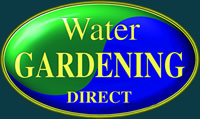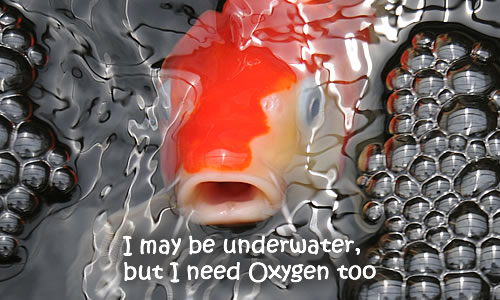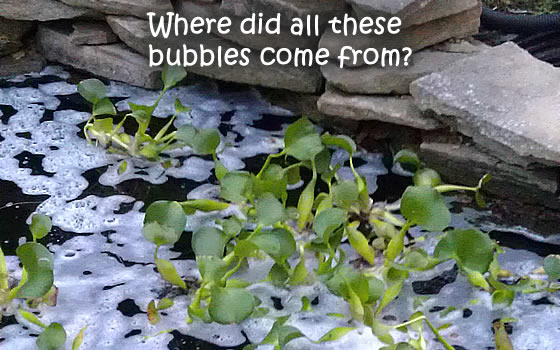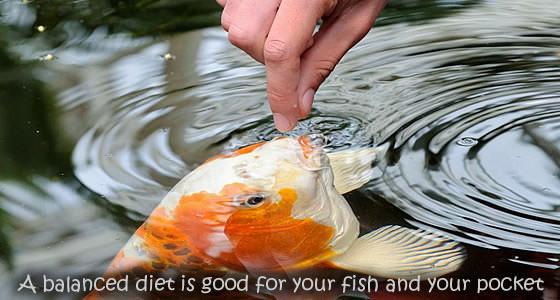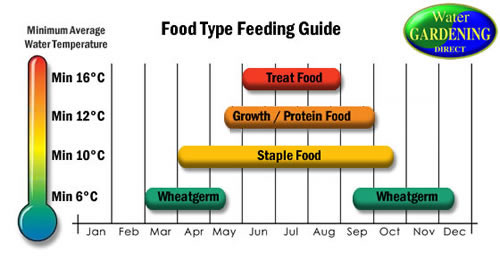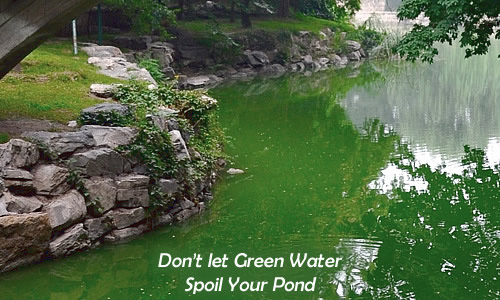
Green Water Problem – Dont let it spoil your pond
As the sun comes out so can the algae which causes green water. This algae is a microscopic single celled plant which is so small it passes through most foam and filter material. In the height of the summer, provided it has sunlight and nutrients, it can reproduce at a fantastic rate, clouding a pond completely in days. It is normally more of a problem in fish ponds, because the fish waste (Ammonia/Nitrate) is being continuously converted by the filter in to plant nutrients (Nitrates). However, in addition to being unattractive it can also cause problems in the pond affecting the pH of the water and the oxygen content.
Even though green water algae is small, like all plants it photosynthesise, this process in underwater plants gradually pushes up the pH of the pond which accelerates algae growth and if left to get very high can seriously affect the fishes health. The process of photosynthesis produces oxygen during the day, but at night the process is reversed, so a pond full of green water may suffer from lack of oxygen at night, which can be a real threat to any fish.
So how can you solve the problem?
In Filtered Ponds
In most ponds, a correctly sized filter system, which is installed and maintained correctly, should easily deal with green water. Some of the common mistakes which can affect the performance of a filter system, are poor flowrates, poor flow patterns, old UV bulbs and poor maintenance.
For a filter system to have a chance of winning the battle in your pond, it has to beat the growth rate of algae and in the summer this is very fast. As a guide the whole pond volume needs to be circulated through the filter once every 1½ to 2 hours. So a pond of 4500 litres (1000 gallons) needs a flow through the filter of 2250 – 3000 litre per hour (500 – 667 gallons per hour). Pumping water through hose, a UV, filter and maybe uphill will all slow the pump down and this needs to be allowed for when sizing a pump for filtration, so that the correct flow can be achieved at the end. If you have clarity problems try testing your flowrate. This is easier with 2 people, one with a stopwatch, the other with a bucket of a know volume. Simple time how long it takes to fill the bucket from the outlet of the filter, then divide 3600 by the time (in seconds) to fill the bucket and multiply by the volume of the bucket. The result is the flowrate.
As mentioned ALL of the pond water has to pass through the filter system every 1½ – 2 hours, if your pond pump is in the wrong place you maybe circulating one end of your pond really well, but allowing the other end to pollute the rest of the pond. This can lead to a filter which is doing all it can to keep up, but a pond that can produce as much algae as it likes. Avoid locating the pump right underneath the outlet from a filter or even half way down the pond. Ideally the pump and filter return need to be at opposite ends of the pond to one another creating full circulation. To improve collection of particles it also helps if the pump is on the base of the pond, at the deepest point.
Old UV bulbs are very common cause of green water. The bulbs are not especially cheap so everyone try’s to get the most out of them. But every UV bulb gradually loose power from the moment you put them on and so become ineffective within a set time scale. UV bulbs should be replaced every 6 months for the double ended fluorescent style or every 12 months for the low wattage PLS or PLL bulbs. The blue glow you see from the bulb is not UV light, our eyes can not see the UV rays emitted and as such the blue is just and indicator that the bulb is on, not a measure of whether it is still giving out UV light. To help with the price of bulbs we offer a buy any 3 replacement UV Bulbs and get the cheapest 1 free.
Click Here to go to our replacement UV Bulbs page
Clean UV’s. Most UV bulbs are protected from contact with water by a Quartz Sleeve, this quartz sleeve can become coated with limescale, just like your kettle. But the limescale will hugely impact on how well UV light will travel through the quartz and needs to be cleaned off. If this is done regularly then removing the quartz sleeve should be easy and you can use clear vinegar or lemon juice to soak in to the limescale and gently rub it off. If the UV has not been cleaned regularly then I would not try to remove it, but instead clean it inside the water chamber. This will involve filling the chamber with kettle descaler or equivalent and letting that loosen off the limescale, but you MUST thoroughly clean this chemical out before reconnecting your UV.
Click Here to go to our replacement UV Quartz Sleeves page
The last stage of the system is the filter medium. In most cases it is the foam that catches the green water particles, and it is vital that the water has to flow through this foam for it to be effective. If the water can find a way around the foam then it will and so will the waste, so make sure the foam is in good condition and a snug fit in the chamber it is in. The other issue with filters is cleaning, you maybe cleaning it too often or not enough. Although the foam is designed to catch algae, the particles are very small and despite being flocculated (clumped together) by the UV, they are still not much bigger than pinheads. New or very clean foam struggles to catch these particles and it is only as the foam gets dirtier and the holes and pathways begin to block will the algae get caught, so if the foam is not dirty do not clean in it. At the other end of the scale if the foam is too dirty water may be able to find away around it, either because the filter has a built in bypass or the foam is distorted with the amount of waste.
Click Here to go to our replacement Filter Foam Sets page
If you want to try to boost the system and get a quick result then Interpet’s Green Away is a very good treatment. It does the same job as the UV clumping the algae together so it can be caught, but one treatment can make sure the whole pond has been dealt with.
Click Here to go to our Interpet Greenaway page
In unfiltered ponds
If the pond is not filtered then you are relying on natural competition from other plants to beat the growth of algae and it can be very difficult to hit the right balance. For the first couple of years of a pond life the algae will probably win the battle, but as all your plants mature they will create more shade and use up more nutrients and hopefully tip the balance in your favour. The plants which will have the fastest impact are shade producing plants like lilies and duckweed along with fast growing oxygenators. If you can create 60-70% surface cover then algae both green water and blanketweed should struggle. Lilies can take several years to become big enough to create this amount of shade and the fast reproducing duckweed can fill the gap very effectively, but a word of warning, duckweed is virtually impossible to eradicate, so you may just be swapping one problem for another. Virtually all oxygenating plants are fast growing and so consume large quantities of the nitrates and phosphates required by the algae to grow. More long-term areas of Reed’s and Iris’s are excellent at extracting the nutrients and as such they are a good idea to include in your planting scheme. If you can not wait for the plants to mature and want to give them a helping hand then the Oase Aqua Active Pond Clear and the TAP No More Greenwater are both very effective but gentle treatments.
Click Here to go to our Green water Treatments page
Click Here to go to our Pond Plant and Accessories Page
Other Useful Links
Click Here to go to our Pond Volume Calculator page
Click Here to go to our Pump Flowrate Calculator page
